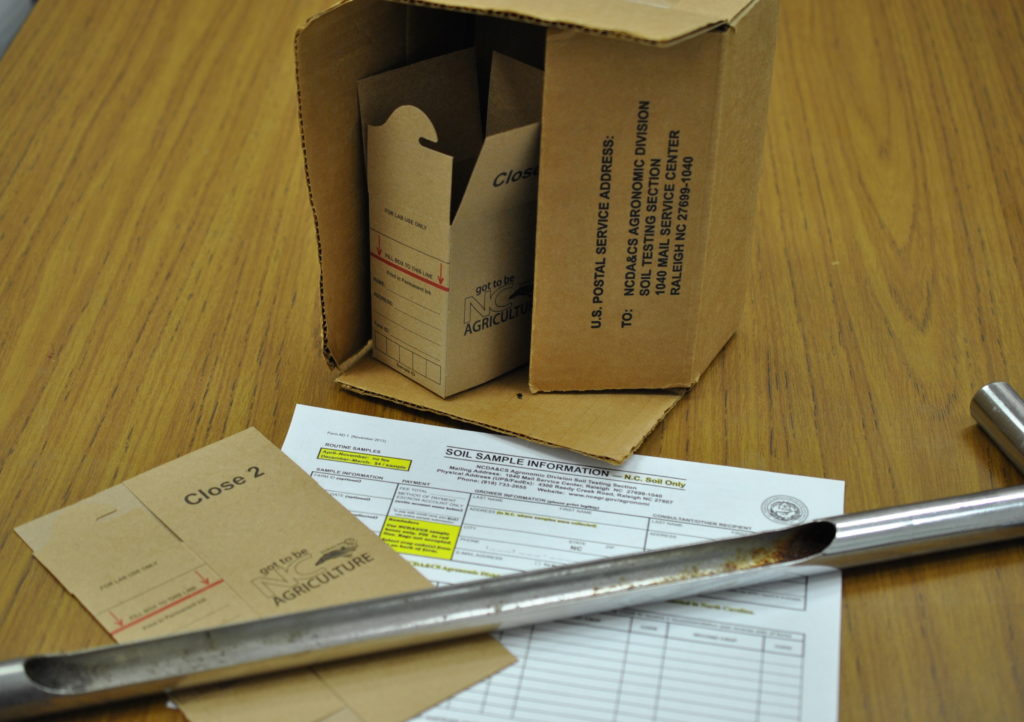Sustainable Landscapes
go.ncsu.edu/readext?704175
en Español / em Português
El inglés es el idioma de control de esta página. En la medida en que haya algún conflicto entre la traducción al inglés y la traducción, el inglés prevalece.
Al hacer clic en el enlace de traducción se activa un servicio de traducción gratuito para convertir la página al español. Al igual que con cualquier traducción por Internet, la conversión no es sensible al contexto y puede que no traduzca el texto en su significado original. NC State Extension no garantiza la exactitud del texto traducido. Por favor, tenga en cuenta que algunas aplicaciones y/o servicios pueden no funcionar como se espera cuando se traducen.
Português
Inglês é o idioma de controle desta página. Na medida que haja algum conflito entre o texto original em Inglês e a tradução, o Inglês prevalece.
Ao clicar no link de tradução, um serviço gratuito de tradução será ativado para converter a página para o Português. Como em qualquer tradução pela internet, a conversão não é sensivel ao contexto e pode não ocorrer a tradução para o significado orginal. O serviço de Extensão da Carolina do Norte (NC State Extension) não garante a exatidão do texto traduzido. Por favor, observe que algumas funções ou serviços podem não funcionar como esperado após a tradução.
English
English is the controlling language of this page. To the extent there is any conflict between the English text and the translation, English controls.
Clicking on the translation link activates a free translation service to convert the page to Spanish. As with any Internet translation, the conversion is not context-sensitive and may not translate the text to its original meaning. NC State Extension does not guarantee the accuracy of the translated text. Please note that some applications and/or services may not function as expected when translated.
Collapse ▲Millions of dollars are spent each year designing, implementing, and maintaining our landscapes. Unfortunately, long-term problems are caused when we as gardeners make decisions based on our needs and wants without considering the environmental impact. You may have heard the term sustainable landscaping. What does a sustainable landscape mean?
A sustainable landscape is an attractive environment that is in balance with the local climate and requires minimal inputs, such as fertilizers, pesticides, and water. The first step is an appropriate design that includes functional, cost-efficient, visually pleasing, environmentally friendly, and maintainable areas.
There are several principles to consider when getting started with the design process. Using a naturalistic design will require less maintenance; provide seasonal interest, while benefiting wildlife. Using native plants that are adapted to local conditions will thrive with little care. Native plants are also a better food source for native wildlife. Choosing plants that are compatible with each other and the environment allows you to create plant communities that require similar needs. Always consider the mature size of the plant and select plants whose ultimate size and shape fit the needs of the landscape. Using a wide variety of diverse plant material will not only provide more seasonal interest but will encourage more wildlife to find shelter in your yard. Plants placed in inappropriate growing conditions (lighting, moisture, temperature, etc.) become stressed and are more prone to pest problems.
Stormwater runoff is another issue that can be addressed by how we choose to garden. Rain gardens, green roofs, and rain barrels are a great way to collect rainwater and reduce the amount of pollution and runoff.
A soil test is the best way to determine the appropriate fertilizer to add to your soil. Apply fertilizers sparingly and at the correct time, according to the directions. This is also true when applying pesticides as well. Homeowners use ten times more pesticides per acre than farmers. Two-thirds of pesticide users dispose of the excess in the trash! Also, many beneficial insects are very sensitive to pesticides. If you must spray, wait until late in the evening, use less toxic products, and know what you are spraying to control.
Consider the water usage requirements for maintaining your landscape. Turf is considered a high water use zone. By reducing the amount of turf in the landscape and developing more naturalized areas you can reduce your water usage. Where feasible use hand tools and electric tools rather than power tools. Remember to keep power tools well-tuned.
Mulching can help your landscape no matter what the soil conditions. Mulch covers and cools the soil, minimizes evaporation, eliminates weed growth, and slows erosion. Mulching will also aid in reducing your water usage by insulating a plant’s root system. Another benefit is that as the mulch decomposes, nutrients are added to the soil.
Implement a compost bin that you can use for locally grown crops and kitchen waste. This will increase the organic matter in the garden while recycling nutrients. Not only will this help the environment it will help your finances as well. Incorporating organic matter into the soil will increase its water holding capacity which means plants in this media will not need water as often.
Learn More!
For more information about plant selections, visit our website, where you can post your questions via the ‘Ask Extension‘ link or contact your local Extension office. If you live in Pender County, call 910-259-1235. In New Hanover County, call 910-98-7660. In Brunswick County call 910-253-2610.





